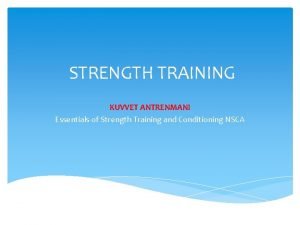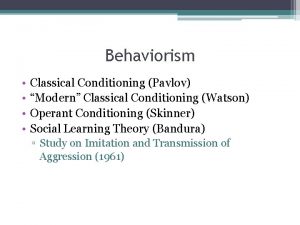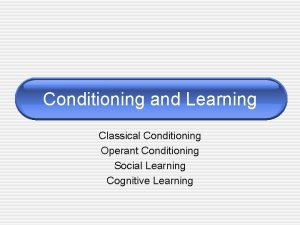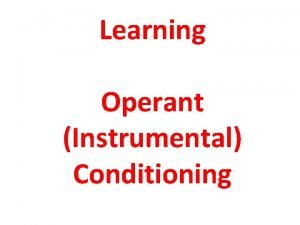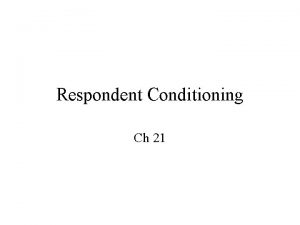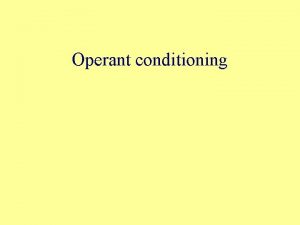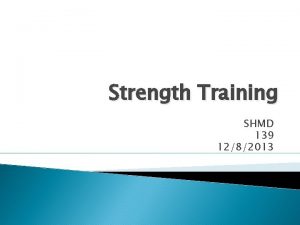STRENGTH TRAINING STRENGTH TRAINING AND CONDITIONING Strength training










- Slides: 10

STRENGTH TRAINING

STRENGTH TRAINING AND CONDITIONING Strength training had been discarded from many therapy programmes over the past five decades due to certain beliefs. 1. Weakness – due to inhibition from spastic antagonist 2. Strength training increases spasticity , co-contraction and abnormal movement patterns. Clinical research has shown that effort applied in strength training does not increase spasticity.

Does not increase Improves spasticity functional performance Butefisch et al Miller and light 1995 1997 Davies et al 1996 Smith et al Sharp and brouwer 1999 Salmela et al 1997 1999 Increasing muscle compliance Otis et al 1985 Hummelsheim 1994

Muscle weakness Is major impairment To effective Functional performance Reduction of descending Input in spinal motor neuron immobility Reduced CV Endurance before stroke

CV endurance Strength training Muscle strength increases Increased strength Increased function

NO EVIDENCE- SPASTICITY INCREASES DUE TO STRENGTH TRAINING SOME EVIDENCE- SPASTICITY DECREASES DUE TO STRENGTH TRAINING NEURAL ADAPTATION STRUCTURAL ADAPTATION TYPES OF EXERCISES OPEN CHAIN CLOSE CHAIN

CONCENTRIC AND ECCENTRIC Many research findings favour eccentric ex as it produces greater force than concentric contractions, has greater mechanical efficiency, lesser metabolic energy lesser muscular is needed for greater force. ELICITING ACTIVITY OF WEAK MUSCLES MRC-2 -3 - partial body weight resistance or resistance through small ranges MRC-0 -1 - eccentric muscle activity ES, EMG BIO FEEDBACK

EFFECTS OF STRENGTHENING Improved postural stability and reduction of falls in elderly Increases muscle strength after stroke Aniansson et al 1980, judge et al 1993, Tinetti et al 1994, Engardt et al 1995, sharp et al 1997, duncan et al 1998. Improved gait performance Ability balance and stair climbing Nakamura et al 1985, weiss et al 2000, krebs et al 1998. Hamrin et al 1982, bohannon and walsh 1991

EXERXISE PRESCRIPTION 10 REP OF 50 -80% OF THE MAXIMUM , 3 SETS , WITHOUT REST BETWEEN EACH REPETITION Body Weight, free weight, elastic bands, tread mill walking Dosage is increased by increasing repetitions number of sets and load. For endurance high repetitions are practiced at low levels of load PHYSICAL CONDITIONING 5 -10 min warm up [ stretching and ROM ex] Aerobic ex [ graded walking , stepping or cycling] Strength training [hip , knee ankle flexors and extensors]

MAXIMIZING SKILL PRESERVING MUSCLE LENGTH AND FLEXIBILITY
 Strength antrenmanı
Strength antrenmanı How old was little albert during the experiment
How old was little albert during the experiment Overjustification effect
Overjustification effect Classical conditioning learning examples
Classical conditioning learning examples Classical vs operant
Classical vs operant Classical conditioning model of learning
Classical conditioning model of learning Classical vs operant conditioning
Classical vs operant conditioning Fixed vs variable psychology
Fixed vs variable psychology Different types of reinforcement schedules
Different types of reinforcement schedules Classical conditioning vs operant conditioning
Classical conditioning vs operant conditioning Operant conditioning classical conditioning
Operant conditioning classical conditioning
